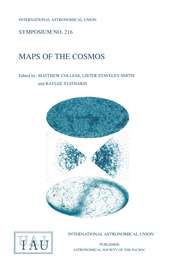No CrossRef data available.
Article contents
Polarization During Caustic Crossing
Published online by Cambridge University Press: 25 May 2016
Abstract
Core share and HTML view are not available for this content. However, as you have access to this content, a full PDF is available via the ‘Save PDF’ action button.
The limbs of hot stars are polarized due to electron scattering, but this polarization cancels out due to rotational symmetry. During microlensing, the star is amplified by different amounts across its surface so that the limb polarization no longer cancels out, but can be observable. Polarization can be much higher for a caustic crossing during microlensing by a binary lens than for a single lens.
- Type
- Chapter 7: Microlensing In the Galaxy
- Information
- Copyright
- Copyright © Kluwer 1996


